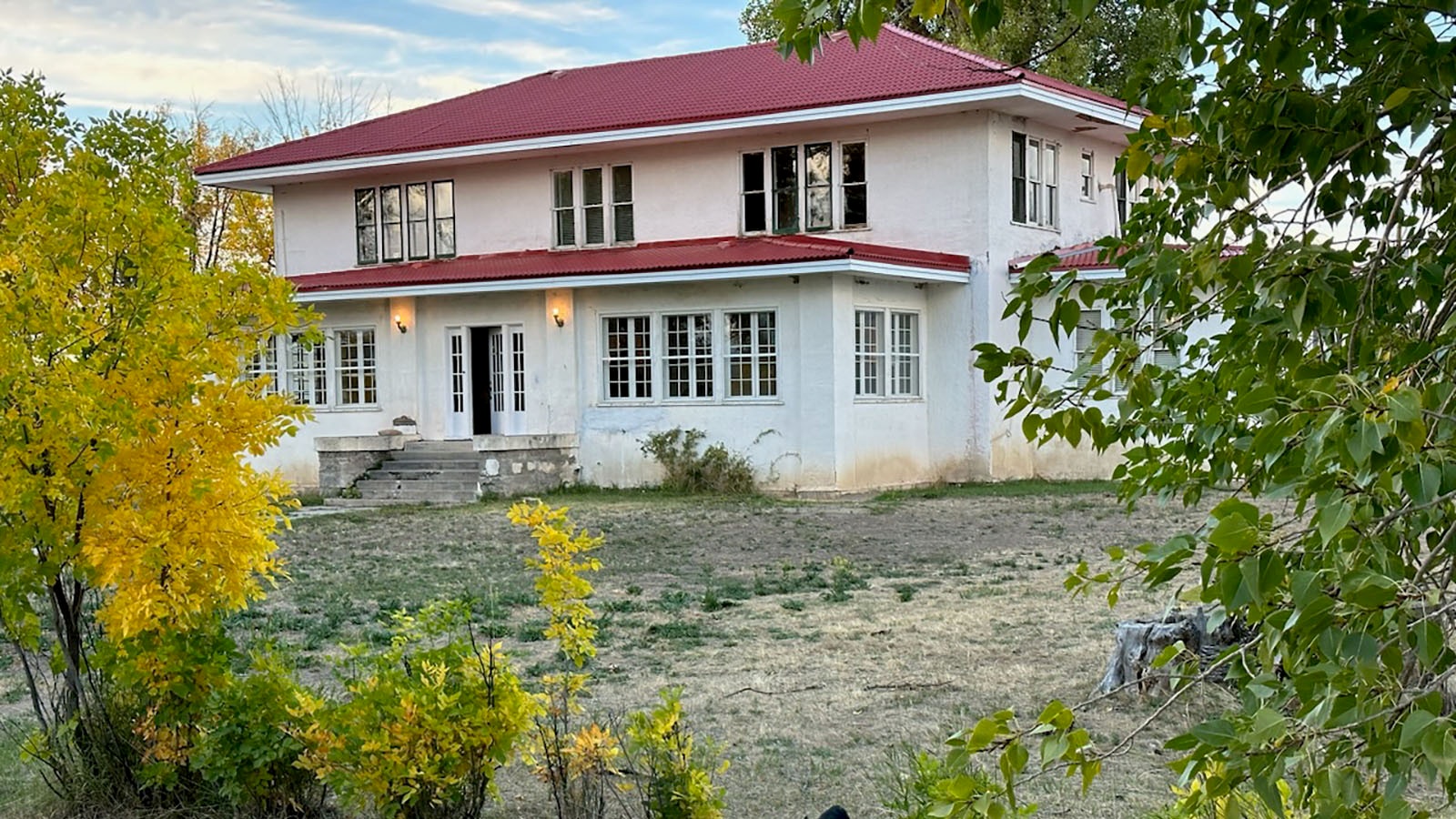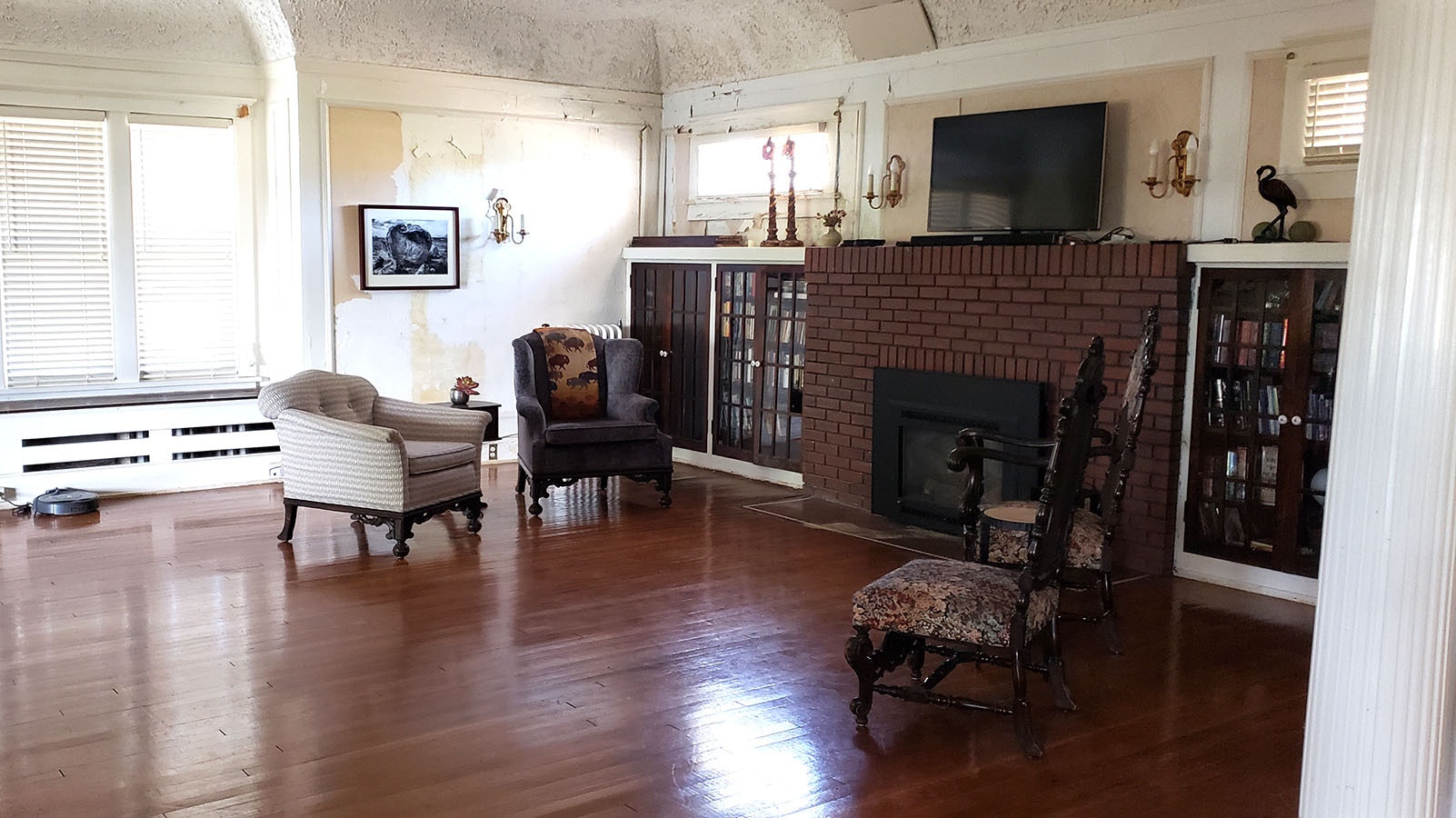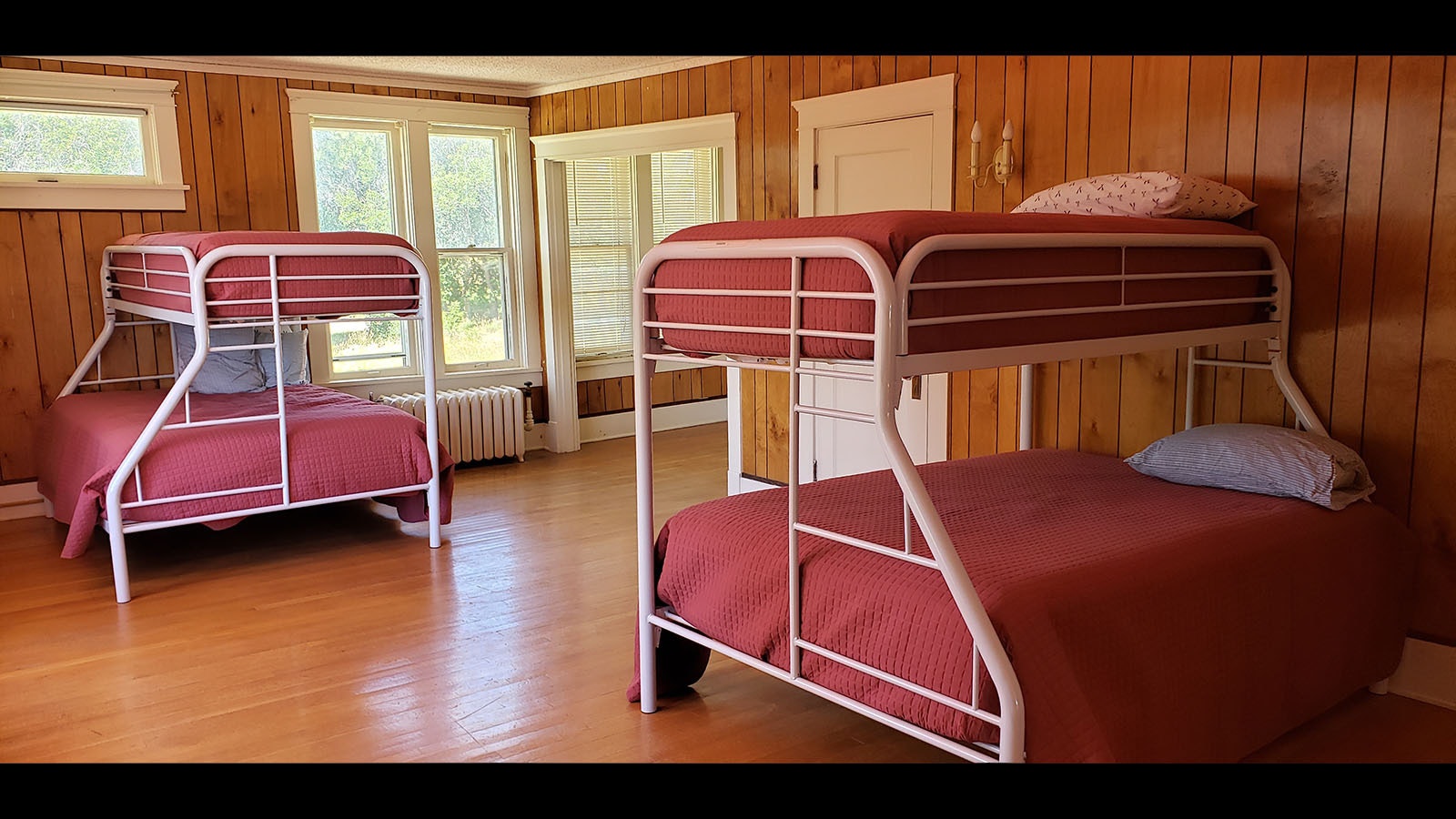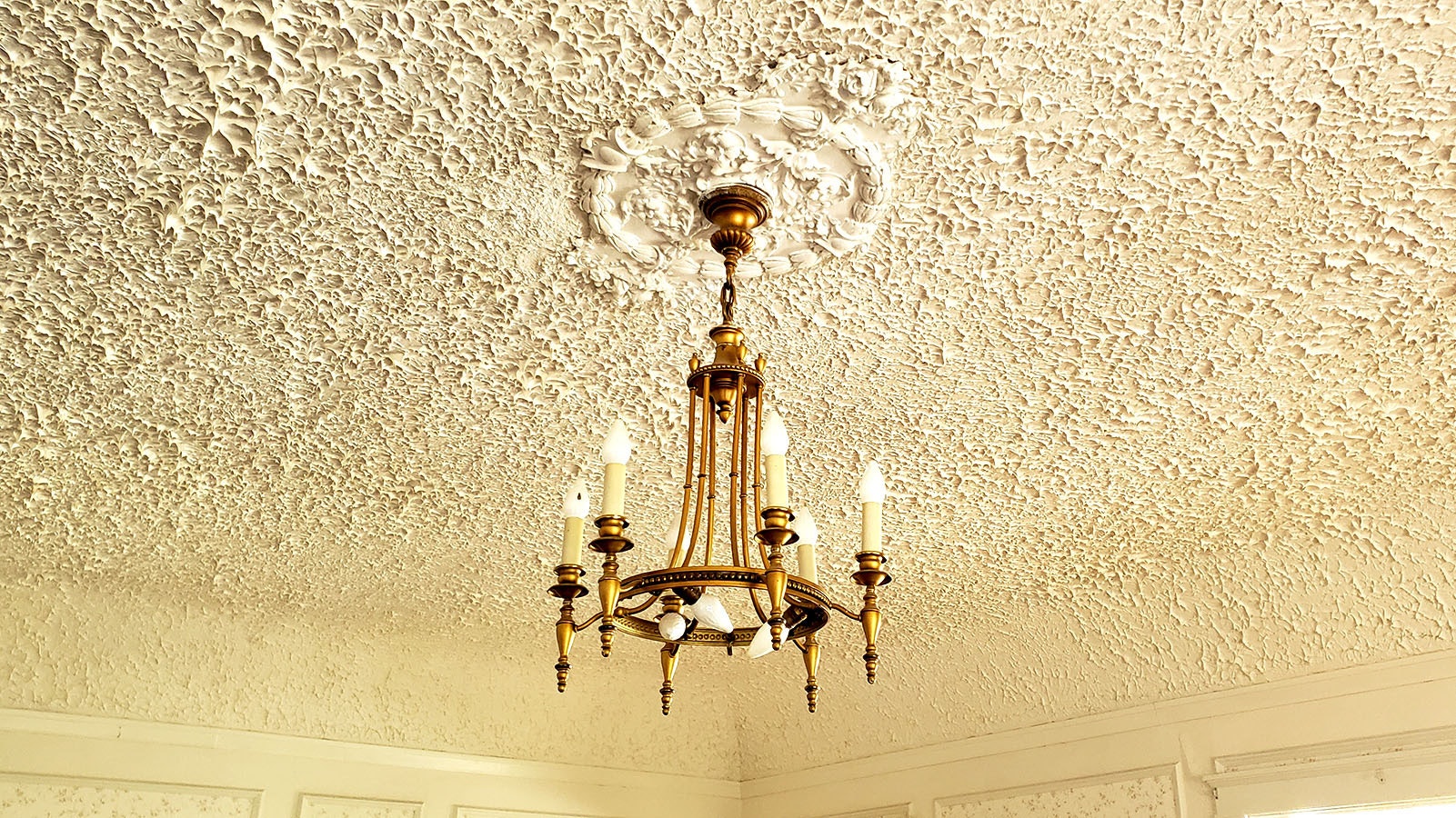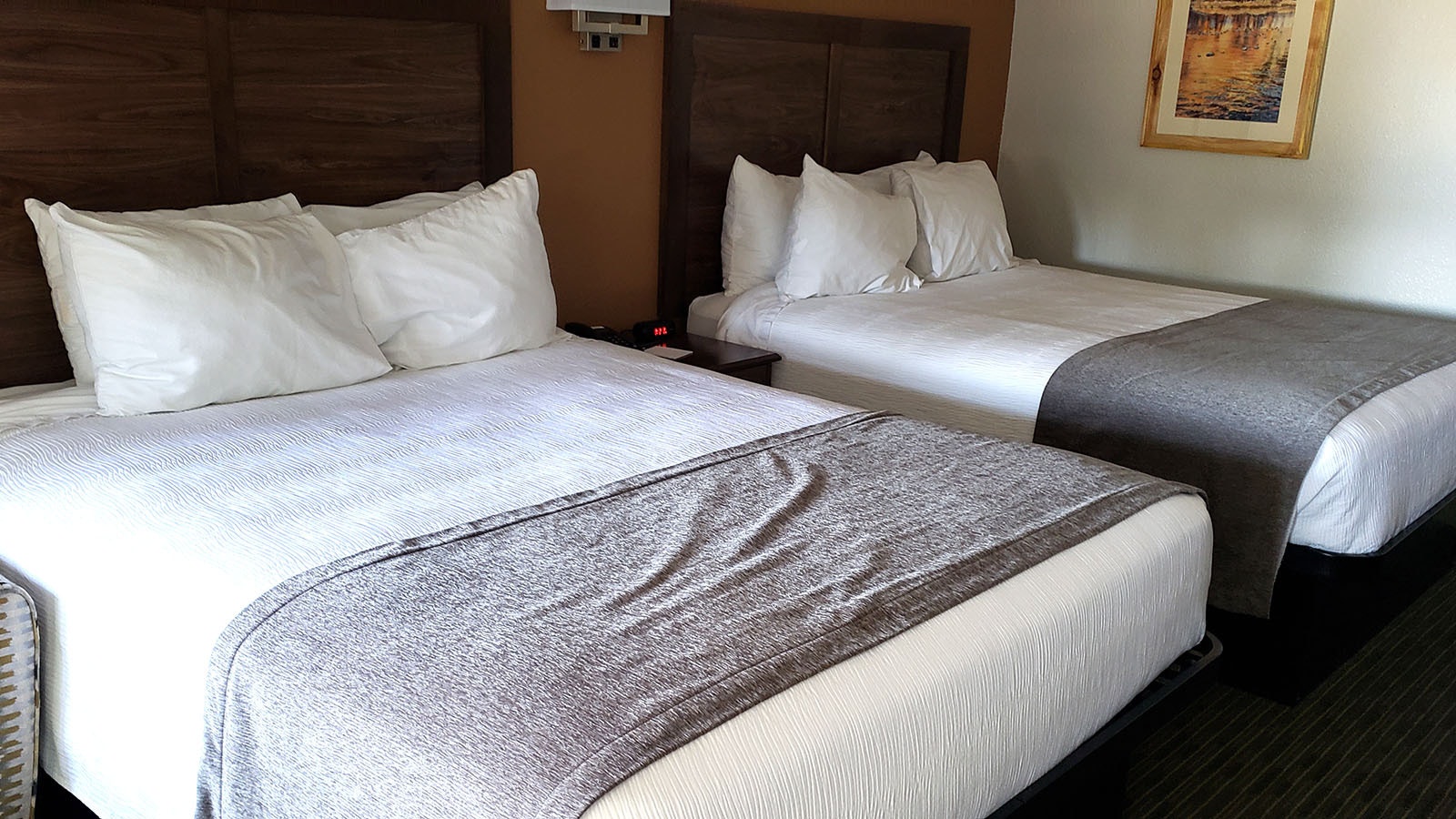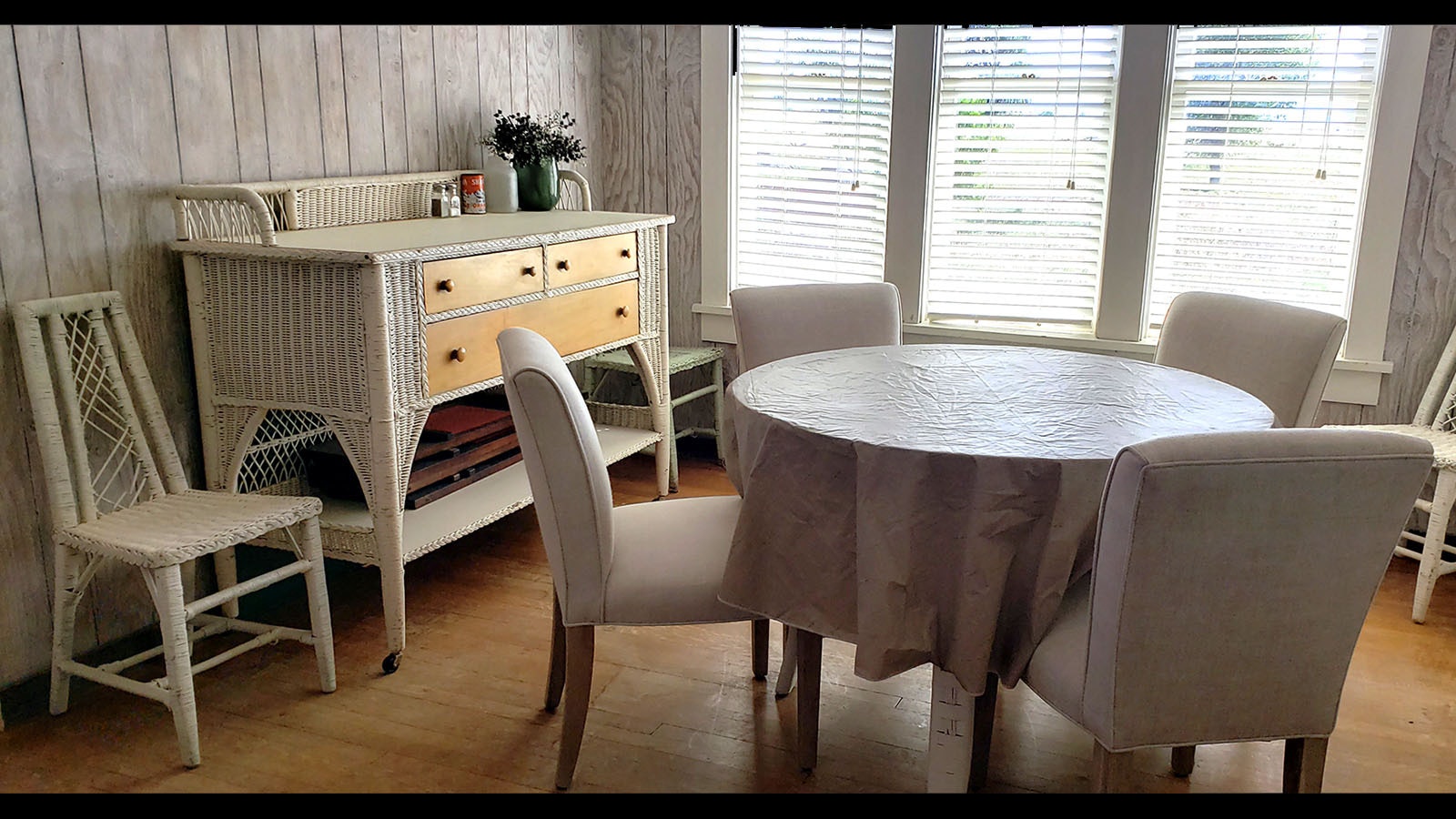THERMOPOLIS — The sun-torched prairie looks like shimmering fire in the distance as the sun sets on yet another day at the Arapaho Ranch.
Located just off of Highway 170 between Thermopolis and Meeteetse in the Hamilton Dome, the 350,000-acre ranch is home to rich Wyoming heritage and history for the Arapaho Tribe. And, of late, it’s been undergoing a revival of sorts.
The ranch is looking to scale back up to its former size and efficiency. But not just the ranch, there’s the Arapaho Ranch Field Station as well, where the Arapaho want to create both an educational resource for children of the tribe, as well as a unique tourist destination that offers a transformative experience, just outside of Thermopolis.
“We are working toward a field school that would have, it feels ridiculous to say it is placed-based or land-based learning, because that is what field stations have always been,” Lorre Hoffman, who directs development for the ranch, told Cowboy State Daily. “What we’re focused on is regenerative agriculture, and we want to interest kids in agriculture.”
But not just the agricultural concepts of old. The regenerative agriculture of today may be based on very old concepts, but it’s going there in a very high-tech way.
“There’s a lot of new ways of doing things, with virtual collars on cattle, and using just a lot of computerizations,” Hoffman said. “And there’s also, we’re calling them new ideas about agriculture, but really it’s, we’ve been working in industrialized agriculture ever since the end of World War II, which has really not paid attention to how to regenerate soil.”
Challenge And Opportunity
Meanwhile, the number of farmers has been greying out, leaving a void, Hoffman said. That presents both a challenge and an opportunity for the Arapaho Ranch.
“There’s been no one to replace them,” Hoffman said. ‘But there’s lots of great jobs in agriculture.”
Recruiting students while they’re young could help build a future army of farmers who can bring regenerative agricultural practices back to the landscape, helping scale up food supplies for the next generation.
“You know, there’s a statistic out there that by 2050 the food needs of the world will have increased by 70 percent,” Hoffman said.
Getting there is going to take new farmers with new ideas, and the Arapaho Ranch hopes to create programs that will help lead the way.
An Italian Villa On The Prairie
Travelers headed to Meeteetse along Highway 170 cannot see the stately old Italian villa that Chicago industrialist Lee Simonsen built on the prairie in 1918. But it is the heart and soul of the historic Padlock Ranch, and a key feature for the Arapaho Ranch as well.
Simonsen lost the ranch and his mansion during the Great Depression. It sat with eight other ranches in receivership for just over a decade, until the Arapaho tribe bought them as part of an economic development program through the federal government in the 1940s.
Not much is known about Simonson and his dreams, or what brought him to Wyoming. But the mansion he built is quite solid, and still in great shape.
Simonsen hid his mansion from casual view with old trees that line a stately drive and encircle it on all but the backside.
Once inside the magic ring of ancient trees, the mansion is double-take worthy. Flashing white walls topped with a deep red roof are quite a contrast for what is essentially the middle of a prairie — nowhere in particular at all.
The grand entryway inside the 5,000-square-foot mansion is itself flanked by two equally grand spaces, a living room on one side, and beautiful dining room on the other. In the center of it all there’s a grand staircase that promises to sweep guests away upstairs, where there are large bedrooms and gorgeous wood floors awaiting, each room with its own private bath.
These gorgeous bedrooms are serving as dormitory space for now, so that students have somewhere to sleep for multi-day educational workshops and experiences at the mansion and are filled with bunk beds.
But pictures of old show how sumptuous and stately they once were and could be again. Eventually, dormitories are planned for the site, freeing the mansion to focus more on large group events — agritourism opportunities, weddings, and maybe even AirBnb stays.
Downstairs, after spending a night at the mansion, there are large sun porches bracketed by eight-foot-wide French doors. It’s the perfect spot to enjoy coffee.
The front sun porch is decorated using the mansion’s original wicker furniture, which has been restored to its former style and comfort.
In fact, many of the other furnishings inside the mansion are original, though in most cases it has been reupholstered and refinished, giving the pieces a new look.
Immersive Learning Opportunities
When Hoffman was growing up, some of her most memorable lessons were immersive learning experiences at the Teton Science School in Jackson.
“I don’t remember much about what I learned in high school, but I remember every single thing we learned and did at the science school because, it was so fun, you know,” she said. “I wasn’t even crazy about going out and sleeping overnight in the snow, a pile of snow and stuff like that. But we learned a lot. It was a great experience and so we want to provide that for the kids.”
But not just kids on the reservation, Hoffman added.
“That is our primary target, but we are open for everyone, not just the Arapaho,” she said.
Hoffman hopes immersive learning opportunities will connect youths with natural resources and agriculture in a memorable way, one that will ultimately encourage forward-thinking stewardship of the land long after her generation is gone.
“In October, we’ll have a whole grade level of junior high kids coming and they’re going to be here for two or three days and two nights,” Hoffman said.
Teepees will be going up and a yurt to handle the large number of people on site.
“We’ll have people everywhere,” Hoffman said. “But I think it’ll be pretty great, and they’ll be planting prairie. We have the prairie solution, which is one of our ongoing projects where we’re you know, starting right in those fields around the mansion planting prairie.”
Restoring prairie grasses is part of the regenerative agriculture focus at the Arapaho Ranch. Prairie grasses are well-adapted to the dry climate, and they have exceptionally deep roots that help bring nutrients up to the surface of the earth, making them much more nutritious for livestock grazing operations.
“We’ve worked with Wind River Seed Company to develop a mix of seeds that would be typical for this area,” Hoffman said. “Which would be, some people call it short-grass prairie. Some call it mixed-grass prairie. And some call it steppe. And the Arapaho Ranch represents all those. Steppe is more in the mountains and mixed-grass prairie would be or short-grass prairie would be the rest of the ranch.”
Making The Ranch Great Again
Over the years, the Arapaho Ranch has moved into a state of decline, but there is a new vision for the ranch now. Part of the vision involves hiring a new ranch manager. Another part of the vision is building the herd’s numbers back up.
Right now, it’s a cow-calf operation with about 4,200 cows. Once upon a time, however, the ranch was more of a yearling operation, which Arapaho Ranch board members Nolan and Sandy Friday believe would be more profitable.
“At one time, we had a big operation, and we just want that to be again,” Sandy Friday told Cowboy State Daily.
A larger, more profitable ranch would provide jobs for Arapaho tribal members, Friday believes, and create a revenue stream that could help build a resource for future generations.
“Most non-Indians, there are places where students can go to go camping or learn about whatever,” Nolan Friday told Cowboy State Daily. “That’s kind of what we want here is for people to come out and be able to learn about ranching. So, you could go learn how to be a cowboy and what we do to keep the cattle going and the farming portion of it here.”
Other ideas for programs at the Arapaho Ranch Field Station include geology tours and blacksmithing workshops. One of the most recent workshops dealt with an equine-assisted learning program, which offers safe experiences with horses to help people learn social emotional skills or develop new professional skills.
University Of Wyoming Connection
Various studies of the Arapaho Ranch are also underway with the University of Wyoming, Hoffman told Cowboy State Daily, including one with the Wyoming Natural Diversity Database, which is housed at University of Wyoming.
“They estimate there should be 163 rare animals within the ranch,” she said. “They are mapping all of the species in the state of Wyoming, plants and animals, and so, you know, in their mapping there’s been a big hole for the reservation.”
Already, a rare frog that needs a special combination of water and limestone has been spotted, Hoffman said.
“We’ve been working with University of Wyoming for years on programs when they have studies that they conduct out here they always leave space open and time for kids to participate,” Hoffman added. “When they were doing bird studies, you know the kids got to go out in the field with them, and just do what the scientists do.”
In the future, that project will bring opportunities to learn more about different grasses and what types of weather they are associated with, Sandy Friday told Cowboy State Daily. Already, two types of grasses that appear to be native just to the Arapaho Ranch have been found.
Weather-related growth is something that particularly interests Sandy. That kind of knowledge could be key to efficient regenerative practices in a place where little rain falls.
“That’s something we ourselves want to learn more about, too,” he said. “That way we can push our cows to those areas and then, when they get done, jump to another area. You know just kind of rotate use of the land.”
Renée Jean can be reached at renee@cowboystatedaily.com.


